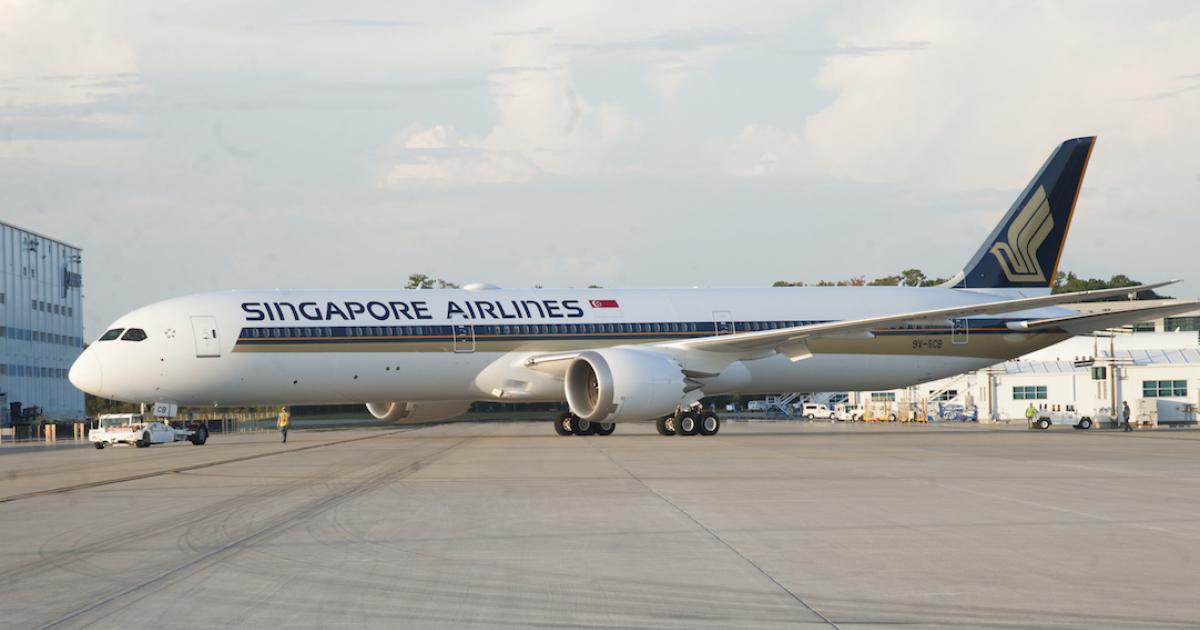FAA Certifies Boeing 787-10 for Service
U.S. regulator awards amended type certificate to newest member of Dreamliner family
Singapore Airlines expects its first Boeing 787-10 to enter service during this year's second quarter. (Photo: Singapore Airlines)
